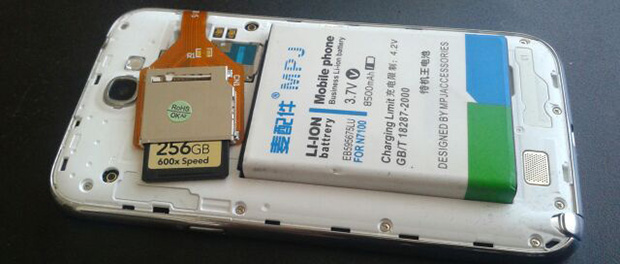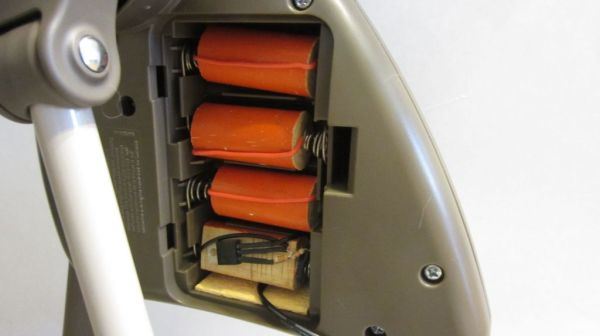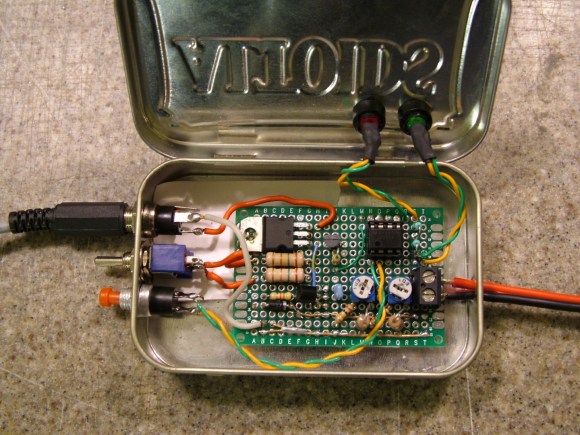
In the quest for the ultimate Android device, [白い熊] on the XDA developers forum created an awe-inspiring monstrosity that gives his Galaxy Note II 288 Gigs of storage and enough battery to theoretically last three and a half months.
First, the storage: the phone can now store movies, videos, apps, and music on an incredibly capacious 256 Gig SD card. Yes, this card currently sells for about $500, but having that much storage space effectively turns the Note into a portable hard drive running Android.
The battery comes direct from an eBay listing that advertises 8500 mAh inside a huge Li-ion battery. It’s extremely doubtful this battery will live up to the stated rating, but even if the new battery has twice the capacity as the stock battery [白い熊] is looking at about 10 weeks of standby time.
Yes, it’s just parts bought online and thrown together, but you really have to admire the sheer ostentatiousness of this phone.
















